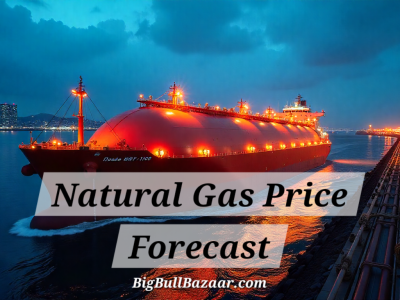Introduction: A Market at a Crossroads
The natural gas market is a complex and dynamic arena, constantly pulled between the forces of supply and demand. As we navigate through 2025, the landscape is defined by a critical tension: storage levels that are comfortably above average versus powerful, structural demand growth that threatens to tighten the market. For investors, analysts, and industry stakeholders, understanding the intricate dance between inventory data, export trends, and shifting market sentiment is key to navigating the volatility ahead.
The Supply Cushion: A Closer Look at Natural Gas Inventories
The foundation of any natural gas analysis begins with storage. Recent data provides a mixed picture. As of mid-May 2025, working gas inventories in the U.S. stood at a robust 2,375 Bcf, a level that sits 3.9% above the five-year average. This surplus provides a significant buffer against short-term demand spikes and is a primary factor currently capping extreme price rallies.
However, a deeper look reveals a more nuanced story. While above average, these inventories are actually 12.3% lower than the unusually high levels seen at the same time last year. This indicates that the surplus is not as overwhelming as it may seem at first glance. Furthermore, weekly storage builds have occasionally come in below analyst forecasts, signaling that underlying demand is steadily eating into the supply cushion.
Production Strength and Underlying Vulnerabilities

Bolstering this inventory cushion is strong domestic production. U.S. dry gas output is flirting with record levels, projected to be over 106 Bcf per day in May 2025. This robust production is the central bearish argument in the market.
Yet, a slight decline in the active U.S. natural gas rig count hints at potential future constraints. If rig counts continue to trend downward, it could signal a leveling off or even a future drop in production, leaving the market more vulnerable to demand shocks.
The Unstoppable Force: Key Drivers of Natural Gas Demand
While supply is strong, demand-side factors are equally powerful and are shaping a increasingly bullish long-term sentiment.
1. Record-Setting LNG Exports: The most potent driver of demand growth is the U.S. liquefied natural gas (LNG) sector. American export facilities are operating at a breakneck pace, shipping record volumes—averaging over 16.5 Bcf per day—to global markets. Europe remains the primary destination, as the continent continues to wean itself off Russian pipeline gas and works to refill its own storage sites ahead of each winter. This structural shift in global energy flows creates a permanent and growing source of demand for U.S. gas.
2. Rising Power Generation Needs: The electric power sector is another critical consumer. With the North American Electric Reliability Corporation (NERC) flagging elevated blackout risks in several regions, the reliance on natural gas for peak summer and winter electricity generation is higher than ever. Additionally, soaring power consumption in major economies like China and India adds further pressure to the global gas balance.
3. The Ever-Present Wildcard: Weather: From heatwaves driving up air conditioning use to colder-than-expected winters, weather remains the most immediate and volatile driver of short-term demand and price swings.
Market Sentiment and Price Outlook: A Bullish Lean
The clash between ample supply and roaring demand is reflected in current prices and analyst forecasts. While spot prices have hovered around $3/MMBtu, the market's forward-looking view is decidedly more optimistic.
The 12-month strip, a key indicator of future price expectations, has recently returned to the $4.00/MMBtu level. This tells us that traders are betting on a tighter market in the year ahead.
This sentiment is echoed by leading institutions:
· The U.S. Energy Information Administration (EIA) projects an average price of $4.02/MMBtu for 2025, citing LNG export growth that outpaces domestic supply gains.
· Some investment banks, like Goldman Sachs, are even more bullish, setting a price target of $4.50/MMBtu for Summer 2026, based on limited short-term supply flexibility.
Recent price action supports this outlook, with Henry Hub futures hitting a 7-month high of $4.10/MMBtu in October 2025, driven by early winter demand and relentless LNG exports.
The Road Ahead: Key Factors to Watch
The natural gas market is poised for a volatile and potentially rewarding period. Stakeholders should keep a close eye on a few critical factors:
· The Storage Trajectory: The central question is whether the above-average inventory cushion can withstand a sustained period of high cooling demand this summer and strong export activity.
· Production Resilience: Any sign of a slowdown in domestic production, whether from a declining rig count or weather-related freeze-offs, would immediately shift market sentiment.
· Global Geopolitics: The global competition for LNG cargoes between Europe and Asia will continue to be a major price driver, sensitive to any new geopolitical disruptions.
· Economic Indicators: Broader economic health can influence industrial demand for natural gas, adding another layer of complexity to the demand forecast.
Conclusion: A Market Primed for Movement
In conclusion, the natural gas market in 2025 is a tale of two timelines. In the short term, high inventories and strong production provide a solid floor. However, the long-term trajectory is being shaped by an irreversible trend: the globalization of U.S. gas via LNG. With export capacity only set to grow and power demand rising, the path of least resistance for prices appears to be upward. For those watching this space, the message is clear: look beyond the weekly storage reports and focus on the powerful structural shifts that are redefining the natural gas landscape for years to come.






Leave a Reply